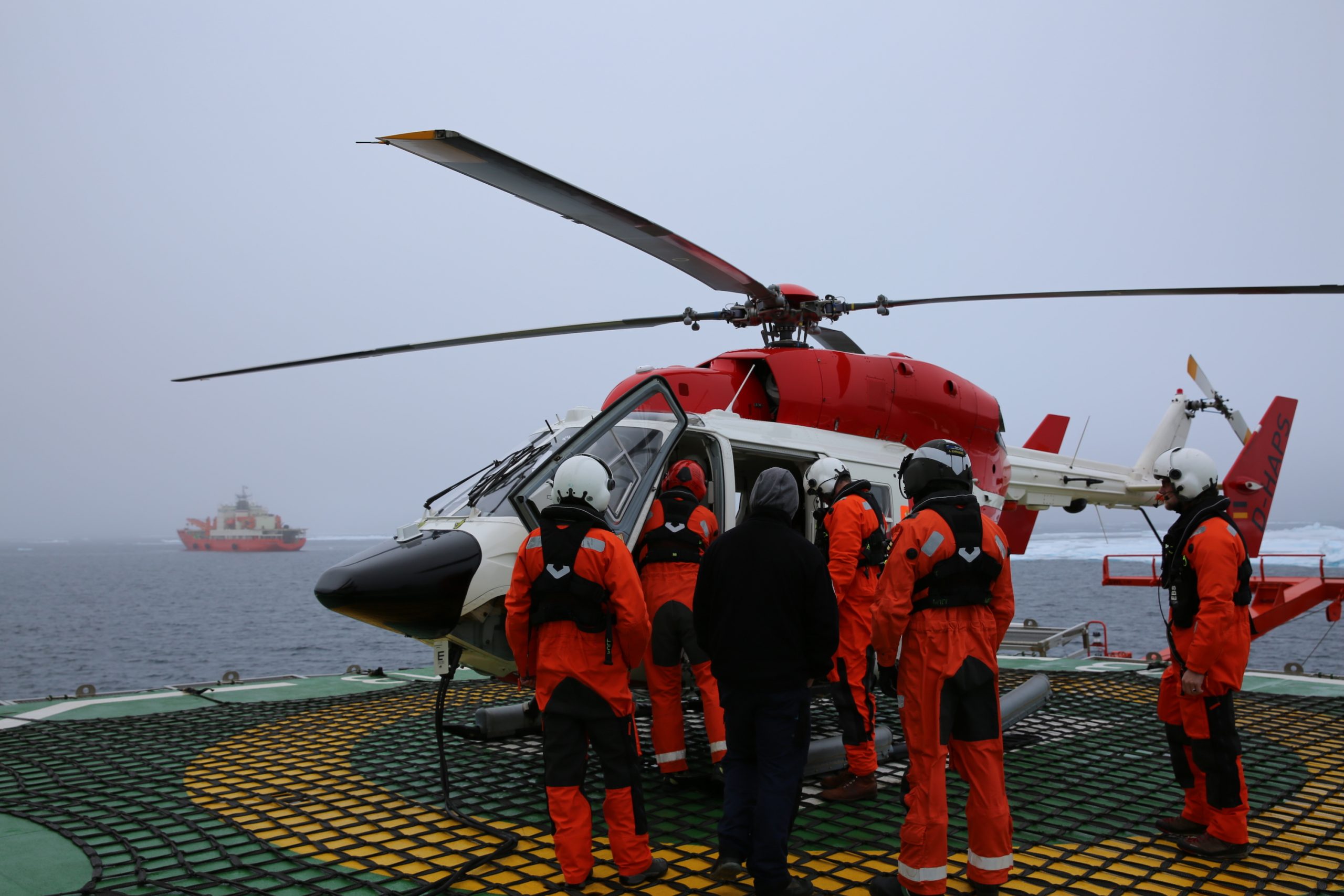by Matthew Shupe, CIRES/NOAA scientist and co-coordinator of MOSAiC
With the rapid decline of the MOSAiC floe in its last days, I became increasingly concerned about the stability of the L2 site and our flux sled there. A few weeks ago it was 7 nautical miles away, then over a couple days this ballooned up to 45 nautical miles. Then in the last days L2 has been racing towards us. 35 miles, 27 miles, 17 miles. Late yesterday evening the station was back in radio range and we scrambled to get at least the basic data downloaded from it. As the local ice concentration kept decreasing. I kind of expected the system to drop off the map, to go silent, at any moment. So getting the data was such a huge relief. That data is so valuable, and now it is safe here with us. And fortunately, the whole station is as well.
Later in the day we headed over to L2, only 5 miles away at the time, and amazingly found the floe mostly intact. However, it was clear that this floe was just holding on to its last moments. Inundated with ocean water around the edges, high melt pond fraction, many ponds melted through. This would not last for long here. So we parked and got in survival suits. Jackson, Laura, and I. Spikes on our boots, clomping out across the floe. We found a good way to push our sled back to the ship, only passing through one melt pond that was only about 1 foot deep. Ready to push, but we needed more team members to help.

The clouds had been lifting, and this opened a window for helicopter operations. And so a sling load approach was on the table. Realistically, I was a bit disappointed because I’ve grown a bit fond of pushing these sleds of ours over the uneven ice, and I figured that we could do the operation faster….. but it would require more people getting out on this unstable ice, so we opted for the sling load. 30 minutes of preparation on the surface, getting the station ready with instruments safe and slings in place. Then the heli in the air, flying overhead, I connected the slings in the whipping downwash…. And away she goes over to the ship with ease. A rescue at L2 and now we have two flux sleds back onboard and operating next to each other on the working deck.


